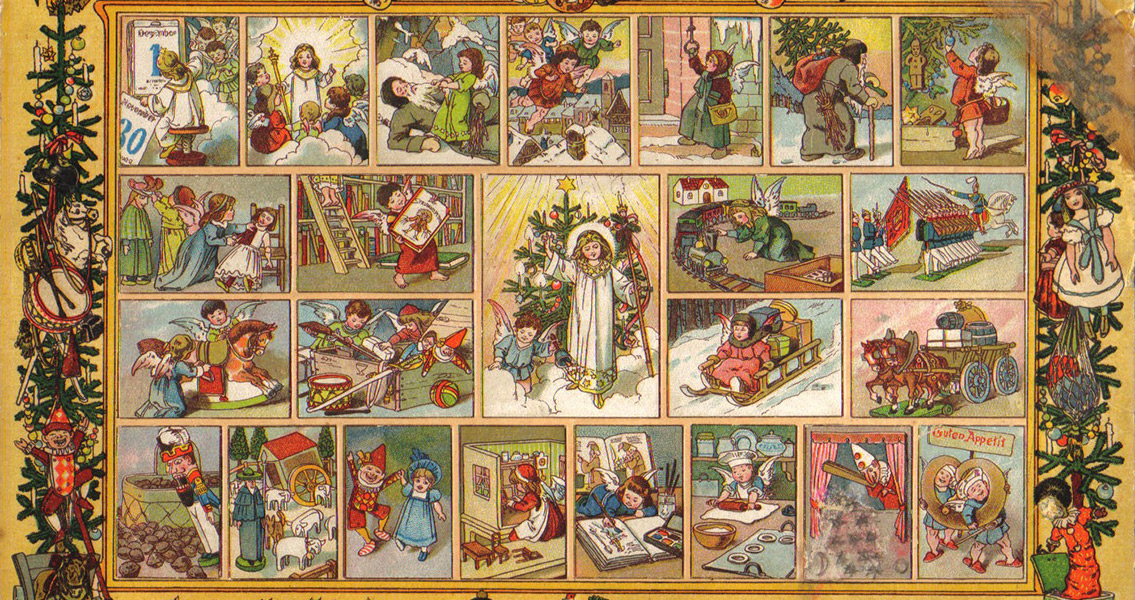<![CDATA[Every 1st December sees people across the world tearing open the first door on their Advent calendar to get to the chocolate inside. On each of the next twenty four days a new door is opened, and a new chocolate consumed in the countdown to 25th December. Advent is an integral part of the build up to Christmas, but where did this tradition come from? The first thing to note is that the Advent celebrated with confectionery filled, TV or movie show themed calendars is far removed from its Christian origins, to the point that the dates don't even match up anymore. In 2016, Advent started on the 27th November according to the liturgical calendar. Like Easter, it's a celebration which falls on a different date each year. Put simply, it is meant to spread across the four Sundays leading up to Christmas Day, which on the Christian calendar means it should start on the Sunday closest to the feast of St. Andrew the Apostle (30th November). For Christians, advent is a deeply significant part of the year for a number of reasons. Similar to Lent, it is a preparatory season, a point of looking forward in anticipation of one of the most crucial events in the Christian calendar: the birth of Christ. For the Western Christian church, the holiday also culminates in the New Church Year. Purple is the official church colour for Advent, ceremonies over the four weeks adorned with the colour. On each of the four Sundays a new candle is lit in an Advent wreath while worshipers pray and recite scriptures that align with the main themes of the holiday. Historians speculate that Advent dates back to around the fourth century, although rituals leading up to Christmas were probably practiced in some form before then. It was during the fourth century that Roman Emperor Constantine set 25th December as the official date to celebrate Jesus' birth. A collection of homilies by Pope St. Gregory the Great (pope from 590-604) include a sermon for the second Sunday of Advent, suggesting the acknowledgment of the season was fairly well established by then. Interestingly, for the first few hundred years of its existence it seems Advent was celebrated over five Sundays. Pope Gregory VII (pope from 1073 - 85) reduced the duration to four Sundays, hinting at the ways liturgical calendars have been changed through history. Historically Advent was a time for fasting, echoes of which can be seen today in Orthodox Christians abstaining from meat and dairy during the season. As the centuries wore on, a more and more celebratory theme started to enter the proceedings. This sense of Advent becoming a time to celebrate the coming of Christ can be seen in carols like 'O Come O Come Emmanuel' and 'Come Thou Long Expected Jesus.' Nowadays, some churches don't keep to the traditional mournful purple for the whole of the four weeks, changing to pink in the third week to represent the coming cheer. Advent calendars, now probably the most well-known mark of the season, don't follow the Christian church's calendar - instead counting down the first 24 days of December. They originated comparatively recently, in the mid nineteenth century. German Protestants made chalk marks on doors, or lit small candles to mark the approach of Christmas. As paper became more readily available, homemade calendars started to appear, narrating the nativity story over the countdown to 25th December. In the early twentieth century Gerhard Lang produced the first printed Advent calendar. His design was inspired by one his mother had made for him in his childhood, but he added the small doors which have now become a staple of advent calendars everywhere. This design became popular in Germany, more companies manufacturing the calendars with the aim of teaching children about the story of Advent and Christmas. The calendars soon started to spread beyond Germany. The biggest jump in their popularity, especially in the USA, came during the presidency of Dwight D. Eisenhower. In 1953, Newsweek published a photograph of the president's grandchildren with an Advent calendar, an event which introduced the design to a massive audience and helped make Advent calendars synonymous with the build up to Christmas. Nowadays, Advent calendars take on a variety of themes, from Star Wars to luxury chocolate. Undoubtedly, Advent retains the theme of anticipation for Christmas, but it has changed drastically through the centuries.]]>
The History of Advent: Romans, Calendars and President Eisenhower
